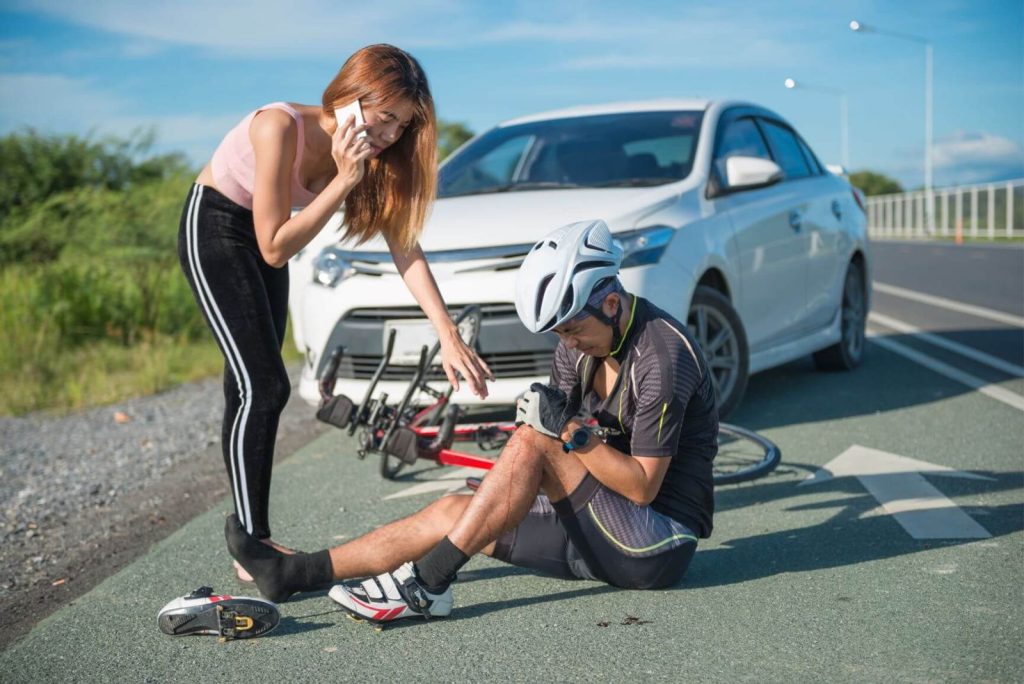In the past few decades, it is estimated that cycling has risen by more than 70%, demanding an increase in the need to share the road between motor vehicles and bicycles. Between 2009 and 2018, vehicles accounted for three of the top five cycling accidents. In many accidents involving vehicles and bicycles, injuries are almost inevitable. The pressure of an accident between the two can cause a great amount of anxiety because of potential liability or negligence. Unfortunately, these anxieties cannot prevent accidents from happening, and as road sharing increases, so too will incidents involving motorists and cyclists.
Many accidents between cyclists and motorists are due to a lack of understanding of basic road rules. There are always rumors about who has the right of way or where cyclists are supposed to be. It’s also easy to assume that because motor vehicles are larger and less maneuverable, more laws are in place to protect motorists. However, it is important to not only understand the rules for operating a vehicle but also the rules that cyclists need to follow to keep everyone on the road safe. It is also important to know what to do and what your options are in the event of an accident.
What Are the Cycling Laws I Should Know as a Motorist?
The following cycling laws may help to create greater safety and avoid accidents as you share the road. Remember that:
- Cyclists must stay to the right of the road and travel with the flow of traffic. However, if they are traveling at the same speed as traffic, they may use any lane.
- Cyclists may “take the lane” to avoid an obstacle, pass another cyclist, or if they are merging in preparation for a left turn. This is allowed even if they are moving slower than the flow of traffic. With proper signaling and blind-spot awareness, a cyclist who may merge in front of you for one of the aforementioned reasons has the right of way, so you must slow down to accommodate.
- Cyclists must follow all motor vehicle traffic laws, including stopping at intersections and obeying posted street markings.
- If an undivided bike lane exists, a cyclist must use that lane. If the bike lane is divided, then the lane is optional to a cyclist. However, they may remain on the right side of the road in the flow of traffic.
- Despite the belief of many, a cyclist’s use of sidewalks is dictated by city ordinances. It is important to know what those say in your local area so that you do not make any assumptions about where the bicycle should be.
- Unless posted by the California Department of Transportation, cyclists should not use freeways, highways, or toll roads.
Too often, there are assumptions made about the rules governing cyclists because they are seen as pedestrians. However, a motorist should think of a bicyclist as another driver on the road who is responsible for following all the same rules. The law keeps rules in place both as a way to protect the safety of everyone and to allow for multiple methods of transportation. However, because everyone is sharing the road, it can be easy to blame a lack of road etiquette on one party or the other. If you are in an accident in which you hit a cyclist, it is important to treat it as any other accident and to gather much of the same information. This will be crucial in determining responsibility in any legal or insurance claims.
What Should I Do If I Accidentally Hit a Cyclist?
In any accident, it is important to remain calm and be sure that everyone is safe. If possible, help the cyclist to the side of the road, but be sure not to move the car or the bicycle unless it is necessary for safety. Then, treat it as you would any other accident:
- Don’t leave. Even if the cyclist appears to be ok or there isn’t any apparent damage, it is important to stay on the scene. Leaving the scene could result in hit-and-run charges.
- Call the police. Call the police, and if necessary, request an ambulance. This is not just a safety protocol for yourself but the cyclist as well. Odds are greater that there is an injury to the cyclist, and it is important that you provide aid within your capabilities.
- Collect information. Like any other accident, collect as much information as you can. Capture the cyclist’s name, phone number, and even their driver’s license if they are carrying it. Additionally, photograph the scene. There are never too many pictures, but pictures can aid any legal or insurance claims that follow. Collect the names and contact information of witnesses that are on the scene and encourage them to add to the police report.
- Contact an attorney. Contacting an expert attorney who can help you through the insurance and legal obligations after an accident is an important step to protecting you. A lawyer can help guide you through sticking to the reporting of just the facts and not admitting fault.
- File a formal accident report. The California Highway Patrol and the California Department of Motor Vehicles require the filing of an accident report within 24 hours of the accident. A police report does not negate this step. Submitting the SR-1 Form to the DMV can help you as the information is not admissible in any legal action but is used to collect the names, insurance, and property damage of those involved.
Trust California Bicycle Accident Attorneys, Guenard & Bozarth, LLP
If you are involved in an accident with a cyclist and believe that they may be at fault, it is important to still follow the same steps above. It is not your responsibility to determine guilt or negligence. An experienced Sacramento bicycle accident attorney can help you keep track of the needs of all parties involved as you work toward a resolution in the accident. Keeping your focus on following the proper procedures and working with your attorney can ease the stress of insurance and legal claims. Guenard & Bozarth, LLP is here to help; contact us today.


